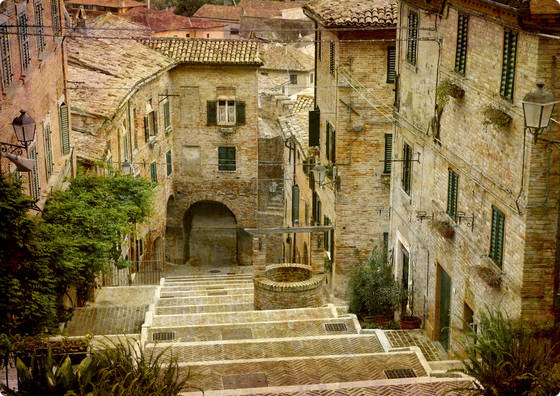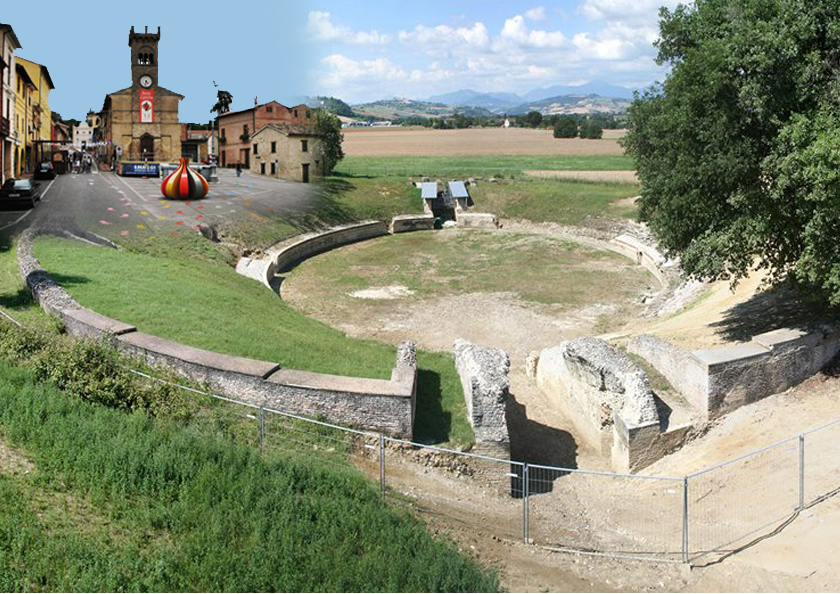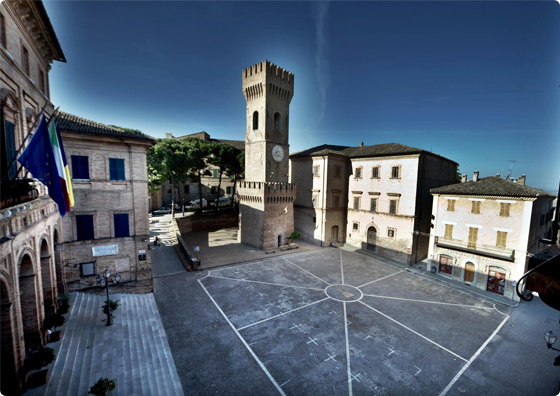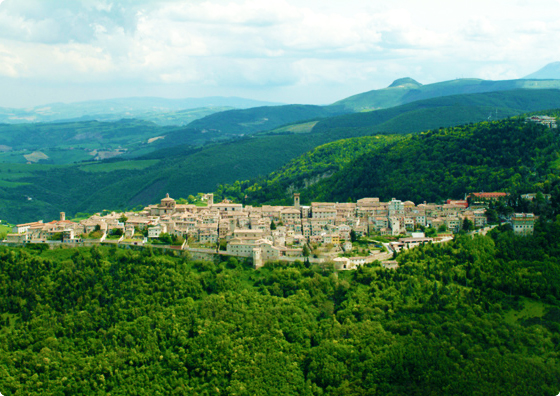Surroundings

Perched on a hill between the valleys of Cesano and Nevola, Corinaldo is well-known because it is surrounded by its long walls ( 912 m uninterrupted ) , which are among the best preserved, intact and impressive of all the center of Italy.Nowadays this nice town has more than 5,000 inhabitants and it is an undisputed destination of cultural and religious tourism. The presence of the Shrine of St. Maria Goretti, who was born here, draws lots of faithful every year.Corinaldo was recognized in 2008 as one of the most excellent tourist destinations and it is also one of "The Most Beautiful Medieval Villages in Italy", full of history, archeology (Church Santa Maria in Portuno ) and culture.

From Corinaldo, continuing for further 10 kilometers inland, we can reach Castelleone of Suasa and Roman Suasa.Set on a hill 206 m above the sea level, Castelleone is located on the right of the river Cesano , the historic center of the medieval town still preserves the features of a fortified village.Castelleone has been founded in the aftermath of the final abandonment in the valley of the Roman city of Suasa (VI - VII century A.D.), nowadays the town is known for the charming and picturesque beauty of its Regional Archaeological Park and its museum, both structures are open to the public.In addition to this, for lovers of good food and good wine, there are many cellars and farms in the area which are always available for tasting of their traditional products, including the famous onion Suasa which earned a reputation of Cipollari (onion eaters) to its inhabitants.

If we want to change the valley, we will meet Ostra. According to its tradition, Ostra derives from the town (of the same name) of Ostra Roman, which once stood in the valley of the river Misa and was destroyed by the Visigoths in 410 a. D. It is possible to see interesting archaeological remains of the ancient settlement in the area called "The Muracce", located 9 Km away from the current town.The legend tells that the survivors from the destruction fled to the surrounding hills and founded the mountain of Bodio, a Roman landowner, a new town that , in his honor , was called Montalboddo.The ups and downs over the centuries have left the town with a rich artistic and cultural heritage, but also local products (wine, honey , .. ) and high quality handicraft.

Watershed between the Marche countryside and the foothills with Apennine features, Arcevia, ancient Rocca Contrada, traces its origins to the period of the barbarian invasions, to accommodate the fugitives from the devastated city of Rome, at that time, in full decline, Suasa, Ostra and Sena Gallica (Senigallia). During the Lombard domination this town played probably functions as a military, for its position of control of major roads on the edge of the Byzantine territories. Perhaps for this strategic role Arcevia was occupied by the Franks and donated in 754 by Pepin the Young (often known as Pepin the Short) to Pope Stephen II, along with other locations. City of history and art, Arcevia preserves many historic masterpieces of art and architecture. The very extensive municipal area includes nine castles (Nidastore, Piticchio, San Pietro, Caudino, Montale, Castiglioni, Avacelli, Palace, Loretello) where you can enjoy a lot of gastronomic delights of the hinterland.


